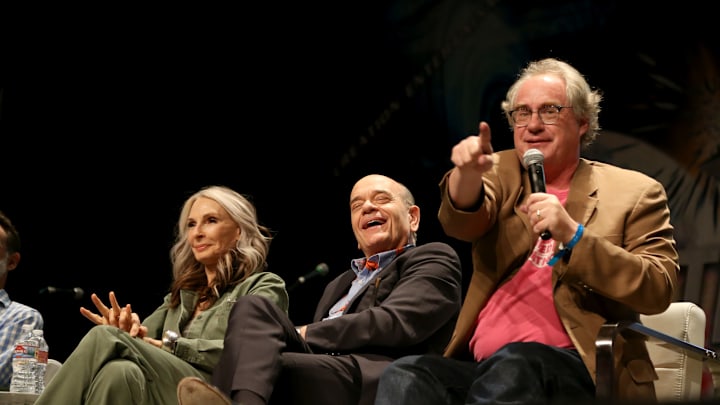Half the fun of being a Star Trek fan is choosing a series and a character from it that you’ll obsess over for decades to come. The shows don’t make it easy, though, what with their massive casts of memorable Starfleet officers, rebels, alien tailors, and more. That being said, it does sometimes feel like the shows want you to pick the doctor as your favorite character, considering that…
Star Trek Doctors Are Often Outsiders
The Outsider is a time-tested way of getting people immersed in your fictional world. Because everything is new to them, their eyes become our eyes, and with enough time, we start to see more of ourselves in their experiences, foibles, and idiosyncrasies. On Deep Space Nine, you have Alexander Siddig’s Dr. Bashir, a freshly-minted Lieutenant who chooses a remote station for his assignment to practice “frontier medicine.” He’s driven by pure romanticism that has little to do with reality, very apt for a series aiming to introduce fans to a new, darker side of Star Trek.
Many shows tweak the Outsider aspect of their doctors to fit the series’ theme like with John Billingsley’s Phlox, the first Denobulan in Trek history serving aboard Earth’s first ship capable of Warp 5 on Star Trek: Enterprise. The series celebrated the joys and thrills of truly new frontiers and, accordingly, made Phlox a jovial character who loved novel experiences, from Earth food to Vulcan rituals.
The Sickbay Tends to be the Centerstage for ST’s Most Gut-Wrenching Episodes
While the bridge crew in any given Star Trek series often deals with individual characters, the stakes in their adventures are usually more… collective, with the fate of a city, an entire race, or even a whole planet being on the line. Doctors, though, tend to deal with solitary patients, which lowers the stakes but ups the emotional payload, leading to some of the most memorable moments in Trek history. Even though it aired in 1992, many fans vividly remember The Next Generation episode “Ethics” where Dr. Beverly Crusher (Gates McFadden) deals with Worf wanting to commit ritual suicide after an accident leaves him paralyzed.
Similarly, the allegory of WW2 human experimentation in the Star Trek: Voyager episode “Nothing Human” marked one of the defining moments for Robert Picardo’s Emergency Medical Hologram as he tried to cure a crew member with the aid of a hologram of a Cardassian mad scientist. Sometimes, the smaller the cast, the bigger the impact of the story, and doctors provide the perfect opportunity for those kinds of plots.
Writers Keep Giving Star Trek Doctors the Most Fascinating Backgrounds
It’s possible for a character to be an Outsider but still have something else going on for them. Characters can be more than one thing (for more information, see Trill symbionts.) And for whatever reason, characters with the most surprising depth in Star Trek tend to be the doctors. Julian from DS9 could have been just a wide-eyed genius novice who had to take a few licks and learn how the real world works. Instead, we eventually discover that he was born physically and mentally stunted and only became who he is today through illegal genetic engineering, a secret that has eaten away at him every day of his life.
Or how about the soft-spoken Dr. M’Benga (Babs Olusanmokun) from Strange New Worlds? He used to be a special-ops agent nicknamed “The Ghost” who still holds the record for most confirmed hand-to-hand kills in Starfleet history, many of which performed on an experimental combat drug. These stories work so well because the world of Star Trek is meant to be utopian, and it’s a bit of a trip to discover the ugliness underneath the surface through the eyes of the franchise’s HEALERS. Let’s hope Star Trek never stops doing that.
